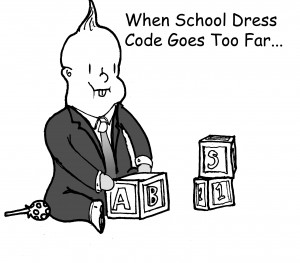Administration Needs to Address Unfair Dress Code
February 13, 2013

School is often defined as a workplace and students are told to dress accordingly. But the administration is assuming everyone wants to work at a stereotypical desk job in a plain office building somewhere; they did not take into account all the blue collar workers.
Though the administration might prefer if every male wore a suit to school and every female wore an appropriate length dress every day that is just not realistic. When students have to wake up early every day, it can be challenging to get dressed up. On occasions, students may elect to stay home from school because the classic pajama pants with a t-shirt look is not an option available at RHS.
Being comfortable is important to learning because if a student is uncomfortable he or she will be unable to focus. Students who can wear comfortable clothes can focus on their schoolwork instead of the constricting clothes they are forced to wear.
There is no county wide dress code; each school creates their own code. At other schools, such as Richard Montgomery HS, students are allowed to wear pajama pants. Without a universal dress code, the administrators at schools are given too much power and can create a dress code with whatever ridiculous rules as long as they do not officially require a uniform.
In past years the dress code has been more lenient. Until the middle of the 2010-2011 school year, the dress code was fair and students were allowed to express their individuality as long as they did not offend anyone. Once students returned from the break that year they were given the news that yoga pants and pajama pants were unacceptable.
At the beginning of the 2011-2012 school year, the dress code was clearly defined and had specific lengths; shorts and dresses have to be at least fingertip length and sleeves needed to be more than one inch thick on the shoulders. Although these rules were stricter, there was a guideline students could follow so they knew what they were and were not allowed to wear.
The current dress code just states, “The judgment of appropriateness of student clothing is at the discretion of school staff members,” meaning administrators or security guards can tell a student to go home for a reason as simple as if they do not match their shirt with their shoes if they deem it inappropriate.
If the administration wants to put in a strict dress code, they have to make sure they enforce it fairly and do not target certain students. When security is talking to one student and tells him to change, the student should not be forced to change if he can point out five other students in the same hallway who are also in violation of the dress code.
Clothes are a way for someone to express themselves; forcing a student to follow a dress code that is too strict limits their individuality.



